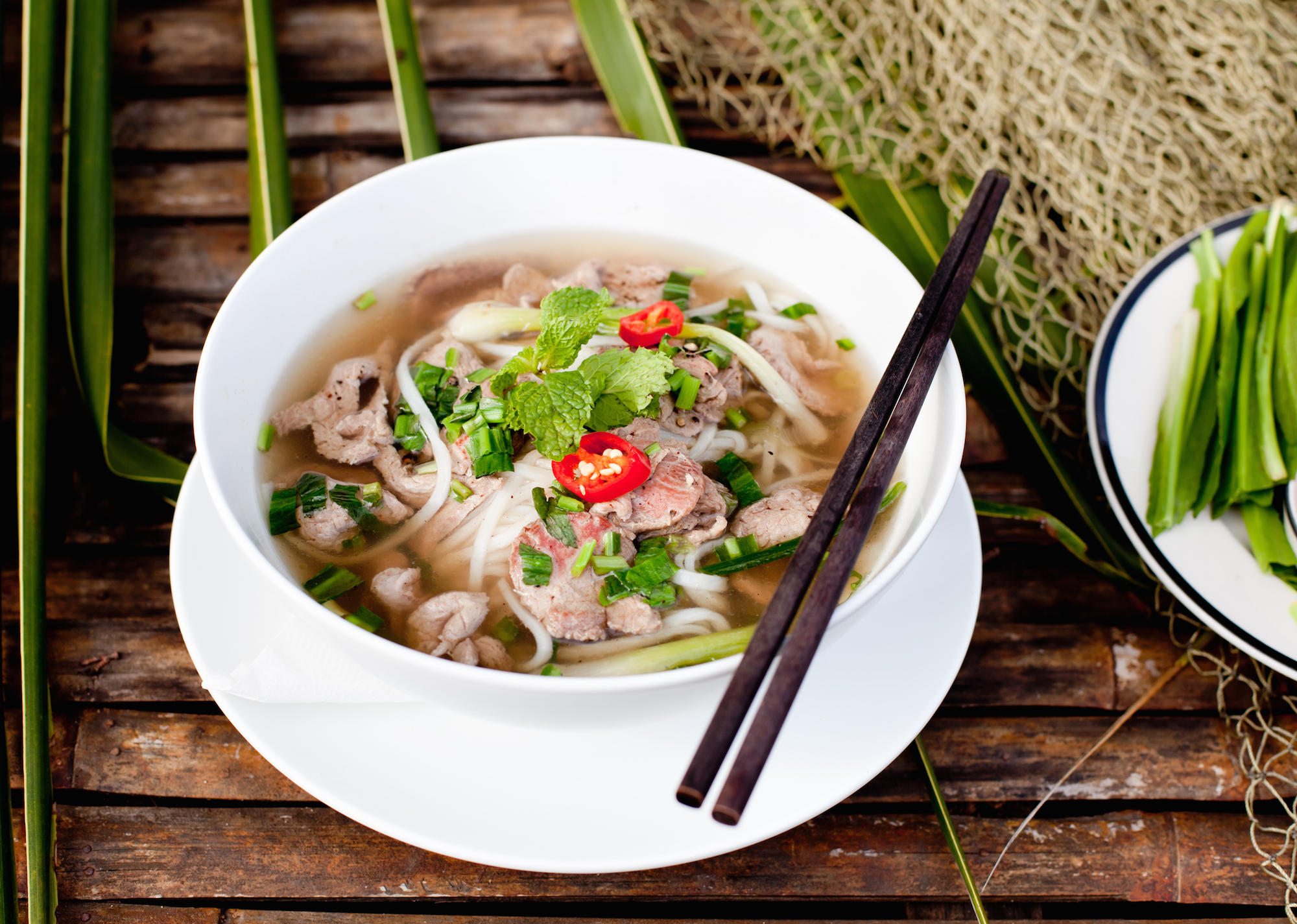
Vietnamese cuisine encompasses the foods and beverages of Vietnam, and features a combination of five fundamental tastes in the overall meal.Vietnamese cooking is greatly admired for its fresh ingredients, minimal use of dairy and oil, complementary textures, and reliance on herbs and vegetables.With the balance between fresh herbs and meats and a selective use of spices to reach a fine taste, Vietnamese food is considered one of the healthiest cuisines worldwide.
Many Vietnamese dishes include five fundamental taste senses: spicy (metal), sour (wood), bitter (fire), salty (water) and sweet (Earth), corresponding to five organs: gall bladder, small intestine, large intestine, stomach, and urinary bladder.
Duck meat, considered "cool", is served during the hot summer with ginger fish sauce, which is "warm". Conversely, chicken, which is "warm", and pork, which is "hot", are eaten in the winter. In northern Vietnam, a colder climate limits the production and availability of spices. As a result, the foods there are often less spicy than those in other regions. The use of meats such as pork, beef, and chicken were relatively limited in the past. Freshwater fish, crustaceans, and mollusks, such as prawns, squids, shrimps, crabs, clams, and mussels, are widely used.
A Vietnamese feast has two courses: main course and dessert. All dishes, except for individual bowls of rice, are enjoyed collectively. All main course dishes are served simultaneously rather than one after another. The major dish of the main course is placed in the centers of the tables, usually big pots of soup or hot pot.